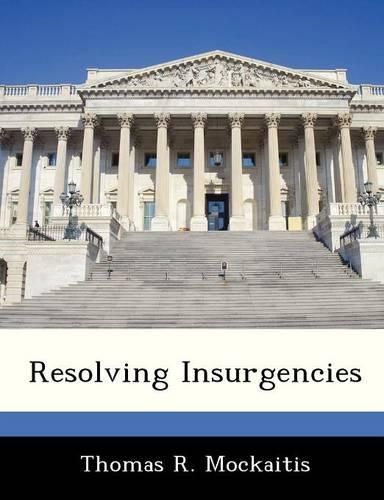Readings Newsletter
Become a Readings Member to make your shopping experience even easier.
Sign in or sign up for free!
You’re not far away from qualifying for FREE standard shipping within Australia
You’ve qualified for FREE standard shipping within Australia
The cart is loading…






Understanding how insurgencies may be brought to a successful conclusion is vital to military strategists and policymakers. This study examines how past insurgencies have ended and how current ones may be resolved. Four ways in which insurgencies have ended are identified. Clear-cut victories for either the government or the insurgents occurred during the era of decolonization, but they seldom happen today. Recent insurgencies have often degenerated into criminal organizations that become committed to making money rather than fighting a revolution, or they evolve into terrorist groups capable of nothing more than sporadic violence. In a few cases, the threatened government has resolved the conflict by co-opting the insurgents. After achieving a strategic stalemate and persuading the belligerents that they have nothing to gain from continued fighting, these governments have drawn the insurgents into the legitimate political process through reform and concessions. The author concludes that such a co-option strategy offers the best hope of U.S. success in Afghanistan and in future counterinsurgency campaigns.
$9.00 standard shipping within Australia
FREE standard shipping within Australia for orders over $100.00
Express & International shipping calculated at checkout
Understanding how insurgencies may be brought to a successful conclusion is vital to military strategists and policymakers. This study examines how past insurgencies have ended and how current ones may be resolved. Four ways in which insurgencies have ended are identified. Clear-cut victories for either the government or the insurgents occurred during the era of decolonization, but they seldom happen today. Recent insurgencies have often degenerated into criminal organizations that become committed to making money rather than fighting a revolution, or they evolve into terrorist groups capable of nothing more than sporadic violence. In a few cases, the threatened government has resolved the conflict by co-opting the insurgents. After achieving a strategic stalemate and persuading the belligerents that they have nothing to gain from continued fighting, these governments have drawn the insurgents into the legitimate political process through reform and concessions. The author concludes that such a co-option strategy offers the best hope of U.S. success in Afghanistan and in future counterinsurgency campaigns.